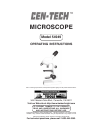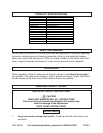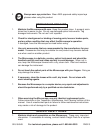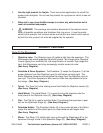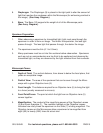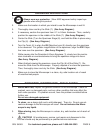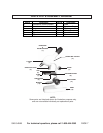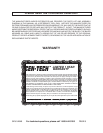
SKU 54949 For technical questions, please call 1-800-444-3353 PAGE 4
2. Use the right product for the job. There are certain applications for which this
product was designed. Do not use this product for a purpose for which it was not
intended.
3. When not in use, store the Microscope in a clean, dry, safe location out of
reach of unauthorized people.
4. WARNING! The warnings and cautions discussed in this manual cannot
cover all possible conditions and situations that may occur. It must be under-
stood by the operator that common sense and caution are factors which cannot
be built into this product, but must be supplied by the operator.
PRODUCT FEATURES
Parts Of The Microscope:
1. Objective Lens: The Objective Lens (5) gathers light from the specimen. This
Microscope has interchangeable Objective Lenses. By changing the Objective
Lenses (going from relatively flat, low-magnification to rounder, high-magnifica-
tion), this Microscope can bring increasingly smaller areas into view.
(See Assy. Diagram.)
2. Drawtube & Zoom Eyepiece: The Drawtube (1) keeps the Eyepiece (1) at the
proper distance from the Objective Lens (5) and blocks out stray light. The
Zoom Eyepiece transmits and magnifies the image from the Objective Lens to
your eye. The Zoom Eyepiece is also used to make fine adjustments to focus
the image. (See Assy. Diagram.)
3. Turret: The Turret (4) is the rotating mount that holds the Objective Lenses (5).
(See Assy. Diagram.)
4. Hand Wheel: The Hand Wheel (11) is used to bring the specimen into the
focal plane of the Objective Lens (5). (See Assy. Diagram.)
5. Clip: The Clip (6) is used to hold the Slide (7) containing the specimen in posi-
tion on the Specimen Stage (8). (See Assy. Diagram.)
6. Drawtube Holder: The Drawtube Holder (2) is the curved portion of the Micro-
scope that holds all of the optical parts at a fixed distance and aligns them.
(See Assy. Diagram.)
7. Mirror: The Mirror (10) reflects light rays up through the Diaphragm (9) to the
specimen through a hole in the Specimen Stage (8). (See Assy. Diagram.)



